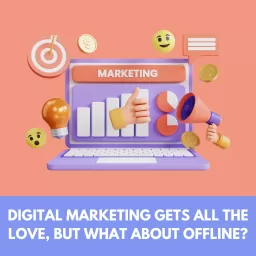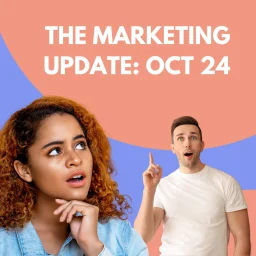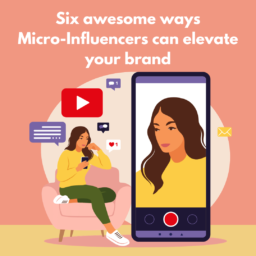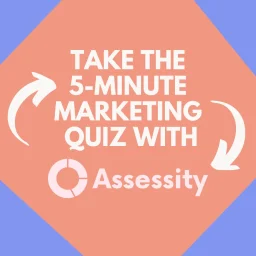Listen, there are dozens of channels available to marketers, some are “free” and others require a monetary investment. Well, all marketing channels end up requiring some form of monetary investment, but you know what I mean. Anyhow, paid social should probably be one of the top paid channels your organisation should be looking at in 2024.
Over the last ten or so years, paid social media advertising has emerged as a powerful tool for businesses to reach their target audiences effectively. Whether you work or a SME or a large organisation, as a marketer, understanding the fundamentals of paid social advertising can significantly boost your online presence and drive meaningful engagement.
So, with this being said, if you’re just starting our in marketing or paid social specifically, here’s a short guide on where to start in this dynamic field.
Back to basics – What is paid social media advertising?
Paid social media advertising involves paying to display promotional content or ads on social media platforms. Unlike organic social media (efforts that rely on unpaid posts) paid advertising allows businesses to amplify their reach and target specific demographics based on user data collected by the platforms.
Key platforms for paid social media advertising
Social media moves FAST and with new platforms springing up every month and dying off just as fast it’s hard to stay in the loop. However, here are some of the major players in the paid social media advertising world. They’re in no particular order:
- Facebook/Instagram (Meta): Facebook’s robust advertising platform allows businesses to create highly targeted ads that appear on both Facebook and Instagram feeds.
- LinkedIn: Ideal for B2B marketing, LinkedIn ads target professionals based on their job titles, industries, and more.
- YouTube: Video ads on YouTube can be targeted based on viewer demographics and interests.
- TikTok: TikTok is a popular platform known for its engaging short videos. It offers ad formats like in-feed native ads, branded hashtag challenges, and branded effects. With its algorithm targeting, TikTok helps brands connect with a youthful, trend-focused audience through creative video content.
- Pinterest: Pinterest allows businesses to promote pins to drive traffic and sales.
- X (formally Twitter. I don’t know why everyone says that…): X offers promoted tweets and accounts to increase visibility and engagement.
Each platform offers unique targeting options and ad formats, so understanding their strengths and audience demographics is crucial when planning your campaigns.
Considerations and setting up a paid social media campaigns
You don’t just want to jump straight in and start setting up ads willy-nilly. You’ll want to do some research and planning first. For example:
- Define your objectives: Whether it’s increasing brand awareness, driving website traffic, generating leads, or boosting sales, clearly define your campaign goals.
- Choose the right platform(s): Not all social media platforms are born equal and depending on your products and/or services certain platforms may be better than others. There are loads of considerations to think about.
- Target audience: Utilise platform-specific targeting options to reach your ideal customers based on demographics, interests, behaviours, and location.
- Budget and bidding: Set a budget that aligns with your marketing goals and choose a bidding strategy that maximizes your ad’s visibility within your budget constraints.
- Ad creative: Develop compelling visuals and copy that resonate with your target audience and align with the platform’s ad specifications.
- Monitoring and optimisation: You don’t want to set up and let them run unmonitored. As a marketer, you want to be checking how things are going on a regular basis and tweaking things. How and when will you do this?
Understanding ad formats
Each social media platform offers various ad formats tailored to different marketing objectives. Ultimately, your choice will depend on your creative budget, products/services, platform, etc. But, here are some of the standard ad formats:
- Image Ads: Static images with text overlay.
- Video Ads: Engaging videos that can be in-feed or as pre-roll ads.
- Carousel Ads: Multiple images or videos within a single ad unit, allowing for storytelling.
- Stories Ads: Full-screen vertical ads that appear between users’ stories.
Choosing the right ad format depends on your campaign objectives and the preferences of your target audience.
Metrics and performance tracking
In marketing, you want to collect data on EVERYTHING! Paid social is no different. Thankfully, there is loads of data that you can use to measure the success of your paid social media campaigns, and monitor key performance indicators (KPIs) such as:
- Click-Through Rate (CTR): Percentage of users who clicked on your ad after seeing it.
- Conversion Rate: Percentage of users who completed a desired action (e.g., purchase, sign-up) after clicking on your ad.
- Return on Ad Spend (ROAS): Ratio of revenue generated to ad spend.
All of the platforms mentioned above provide analytics dashboards that offer insights into campaign performance, allowing you to optimise your strategies in real time. Make sure you’re checking these daily when you are running campaigns in case something goes wrong or you need to pivot slightly.
Best practices for beginners
It’s important when starting out with paid social, or any other paid advertising for that fact, not to just take a huge pot of money and jump right in. Here are our recommendations for starting out in paid social.
- Start Small: Begin with a modest budget to test different ad formats, audience segments, and messaging. £100 is a good place to start and build from there.
- A/B Testing: Experiment with variations of your ads to identify what resonates best with your audience.
- Monitor Competitors: Learn from successful campaigns in your industry and adapt strategies to fit your brand’s unique voice and offerings.
- Stay Updated: Social media platforms frequently update their algorithms and ad policies, so staying informed ensures compliance and maximises your campaign’s effectiveness.
Conclusion
Paid social media advertising offers fantastic opportunities for businesses to connect with their target audiences in a measurable and cost-effective manner. By understanding the basics—from setting campaign objectives and choosing the right ad formats to tracking performance metrics and optimizing strategies—beginners can navigate this dynamic field with confidence. Embrace experimentation, stay informed about industry trends, and continuously refine your approach to harness the full potential of paid social media advertising for your business’s growth.
If you’re considering utilising social media advertising for your organisation, we’d suggest checking out the following free resources and courses:
- Meta Blueprint;
- LinkedIn Marketing Solutions;
- X (Twitter) Business;
- Pinterest Ads Help Center;
- TikTok Business;
- HubSpot Academy;
- Hootsuite Academy.
Alternatively, why not look into our Multi-Channel Marketer apprenticeships where one of out elective modules is around paid social media? It’s just a thought…
Interested in seeing more of our guides, advice, and articles on marketing apprenticeships?
Then sign up for our monthly newsletter. We’ll send you all the information on our latest stuff and general updates as well. Sign up below!

















